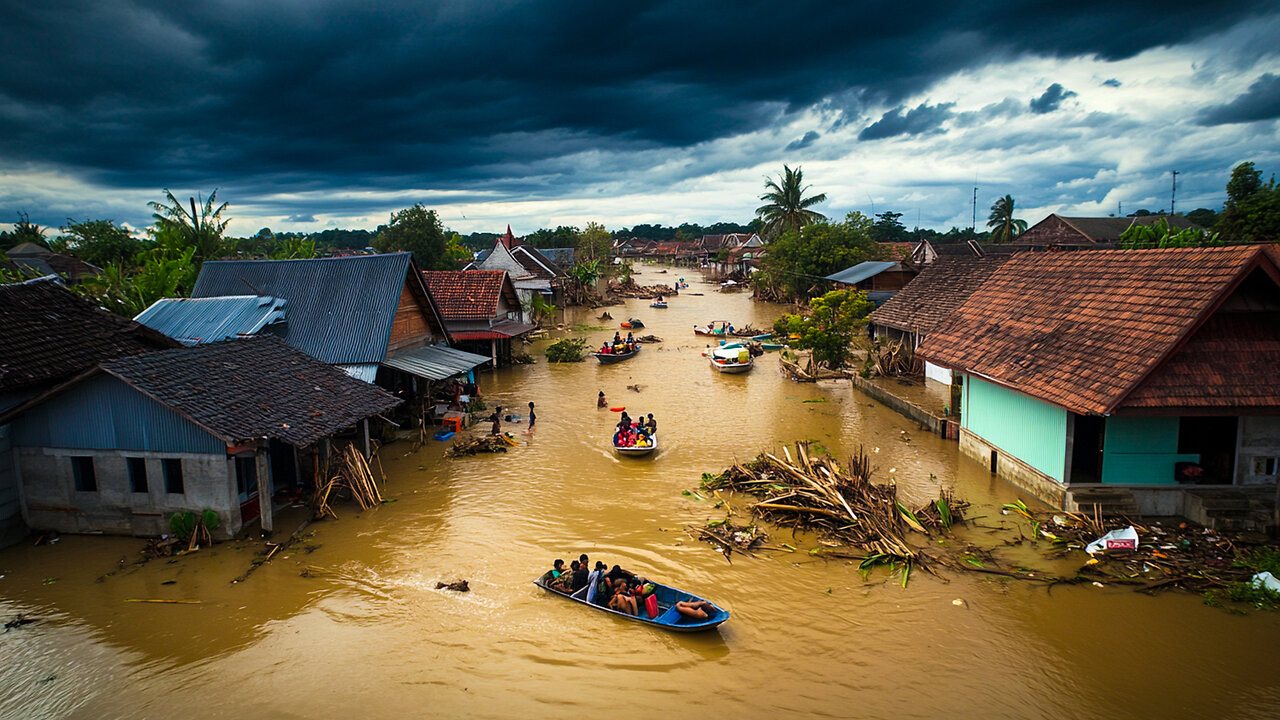Premium Only Content

Malaysia NOW! Monsoon Fury: Red Alerts Issued Amid Deadly Floods in Southeast Asia
Heavy rains brought by the northeast monsoon have hit western Malaysia and southern Thailand.
The Golok River, which forms the natural border between Malaysia and Thailand, reached a record level of thirty-eight feet and one inch, surpassing its previous peak in 1997.
In Malaysia, vast areas across seven states have been flooded. As of November 28, the disaster affected more than seventy-one thousand people, prompting authorities to open 385 temporary shelters. The states of Kelantan and Terengganu were hit hardest, with over fifty-two thousand people evacuated in Kelantan alone. In this state, power companies were forced to shut down 17 substations after two people died from electric shocks.
Overall, the flooding in Malaysia has claimed four lives. Videos on social media show submerged homes, farms, and shops, while rescuers evacuate stranded residents using boats or wading through waist-deep water. In some instances, the floods swept away entire structures, including a popular floating restaurant.
The country’s meteorological department declared a "red" danger level due to heavy rains, warning that severe downpours would continue until November 29.
The catastrophe also affected southern provinces of Thailand, where water levels in some areas reached rooftops. In the provinces of Songkhla, Pattani, Yala, and Narathiwat, thousands of homes were submerged. Authorities organized mass evacuations to rescue residents from the flooded areas. In total, the flooding impacted over one hundred thirty-six thousand households.
Flooding is a common occurrence during the monsoon season from November to March, but this year the rains were exceptionally intense. In Malaysia, current river levels have exceeded those recorded during the 2014 floods, one of the most devastating in recent decades.
One of the key factors contributing to the increasing frequency and severity of floods not only in monsoon-affected regions but worldwide is the rising atmospheric humidity caused by abnormal ocean warming.
There is, however, hope: scientists have developed a technology capable of simultaneously reducing atmospheric humidity and removing microplastics from oceans. This innovation could restore the oceans' natural role as Earth's "air conditioner," helping to mitigate the intensity and frequency of extreme weather events such as torrential rains, storms, and hurricanes.
You can learn more about this technology and its potential in the documentary “Climate Crisis and Ocean Pollution: Global Challenges and Solutions.”
-
 9:46
9:46
AllatRa TV
17 hours agoIceland NOW! Reykjanes Volcano Erupts: Lava Threatens Key Infrastructure!
53 -
 2:11:08
2:11:08
vivafrei
14 hours agoEp. 238: Kash Patel to CLEAN FBI'S CLOCK! Ray Epps DISMISSED! Trump Charges GONE! Debanking AND MORE
194K180 -
 LIVE
LIVE
Vigilant News Network
8 hours agoCancer Remission Achieved with Low-Cost Drug | Media Blackout
1,237 watching -
 18:28
18:28
DeVory Darkins
2 days ago $130.55 earnedCNN Goes NUCLEAR on Elon Musk with SHOCKING Allegations
366K568 -
 44:46
44:46
Stephen Gardner
9 hours ago🔥 Col. Macgregor Reveals Putin's Hypersonic Strike Plan – Is Ukraine Ready for Revenge?
73.5K112 -
 1:10:25
1:10:25
Professor Nez
11 hours ago🚨Trump Just Unleashed the Deep State's WORST NIGHTMARE! (FULL BREAKDOWN)
51.8K236 -
 28:09
28:09
Michael Franzese
20 hours agoThese Athletes Are STEALING Gold Medals From Women | Deep Dive
125K60 -
 6:04:01
6:04:01
TheItalianCEO
13 hours agoGTA V RP First Time EVER (help)
108K5 -
 5:41
5:41
Chef Donny
2 days agoPan Frying Dumplings With Thanksgiving Leftovers | Tasty Tailgating Ep. 12
80.2K1 -
 6:50:37
6:50:37
Scottish Viking Gaming
13 hours agoSTALKER 2 | Sunday Funday | The Zone makes my Brain Fuzzy
57.3K3